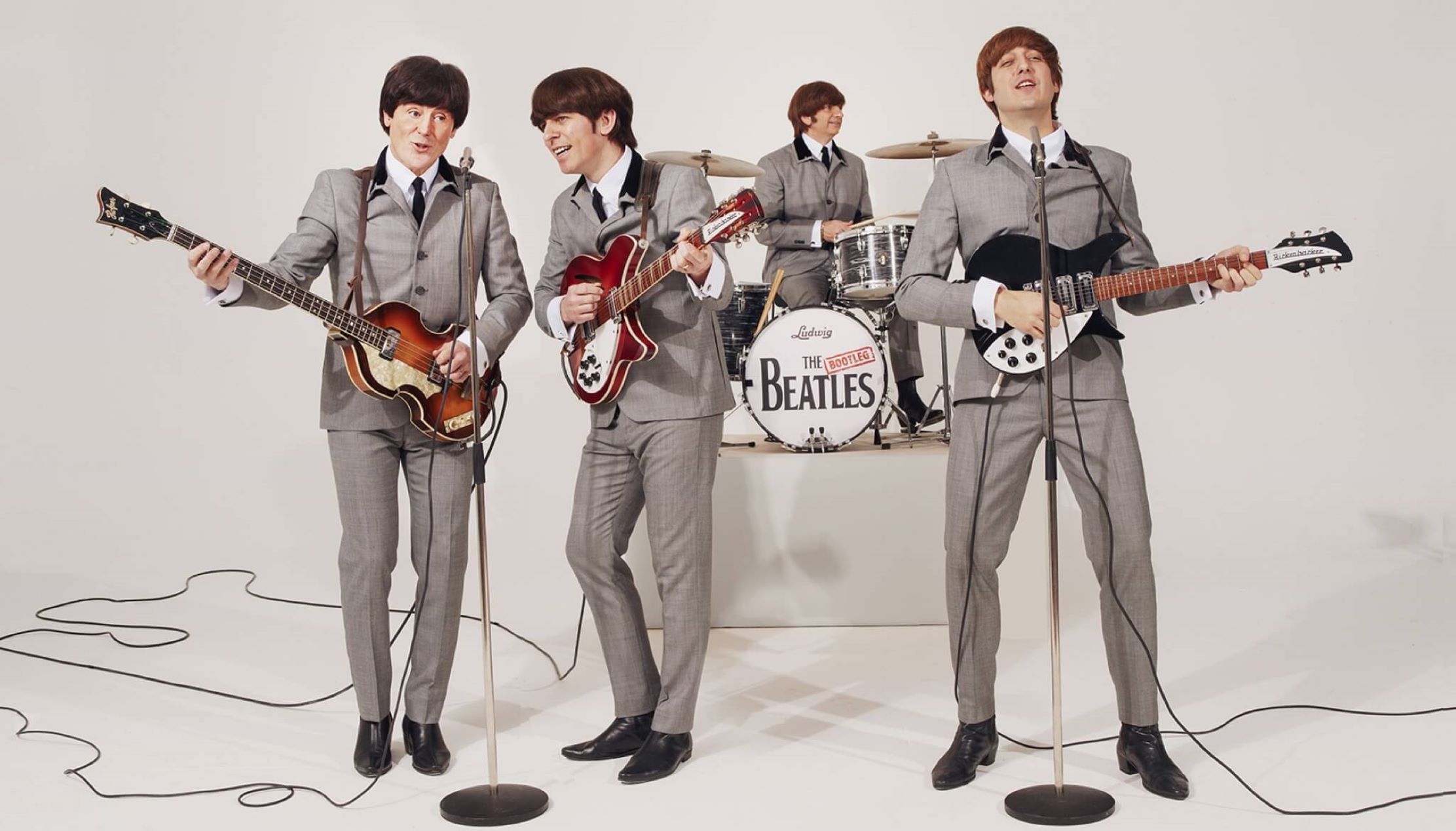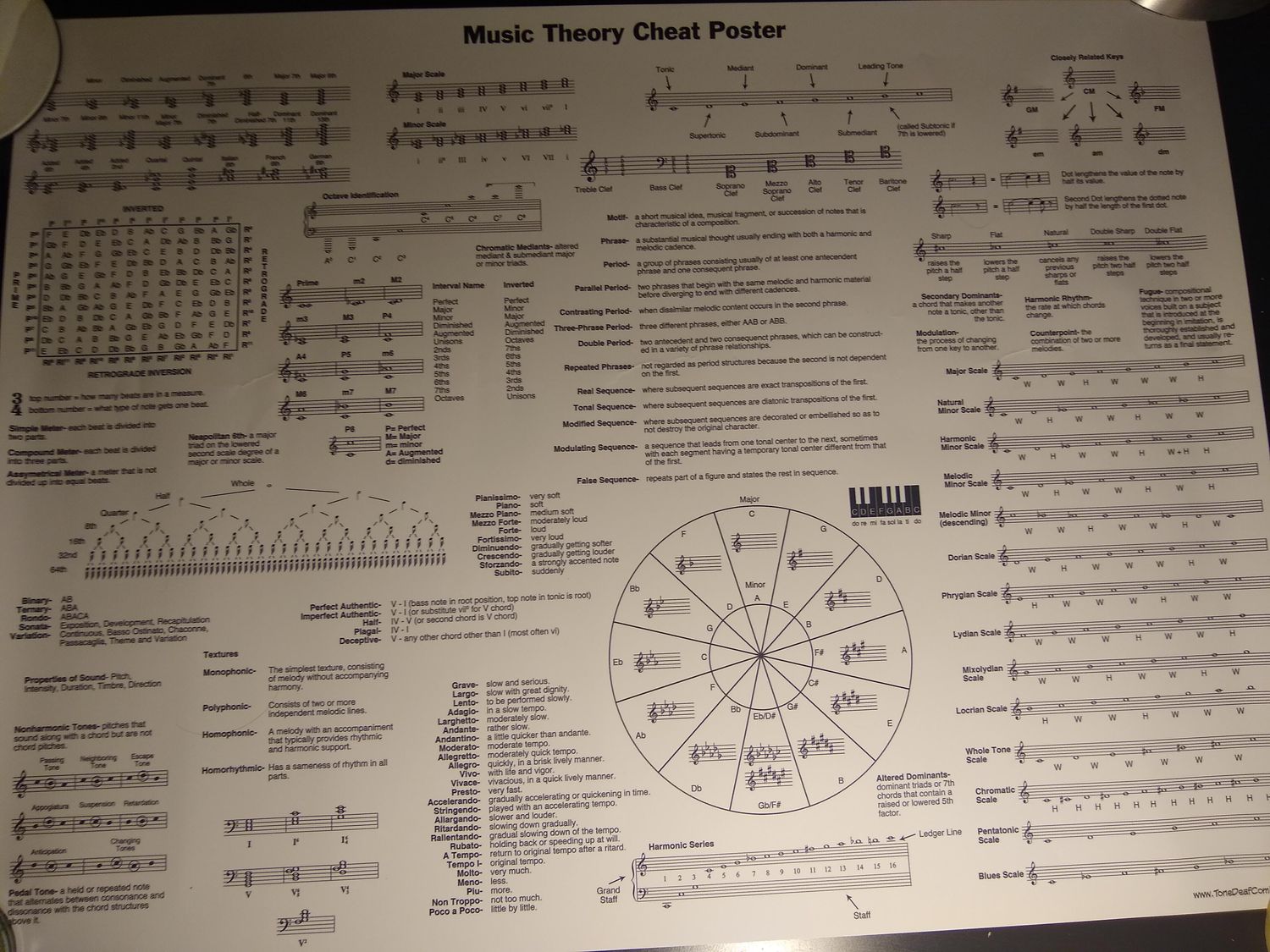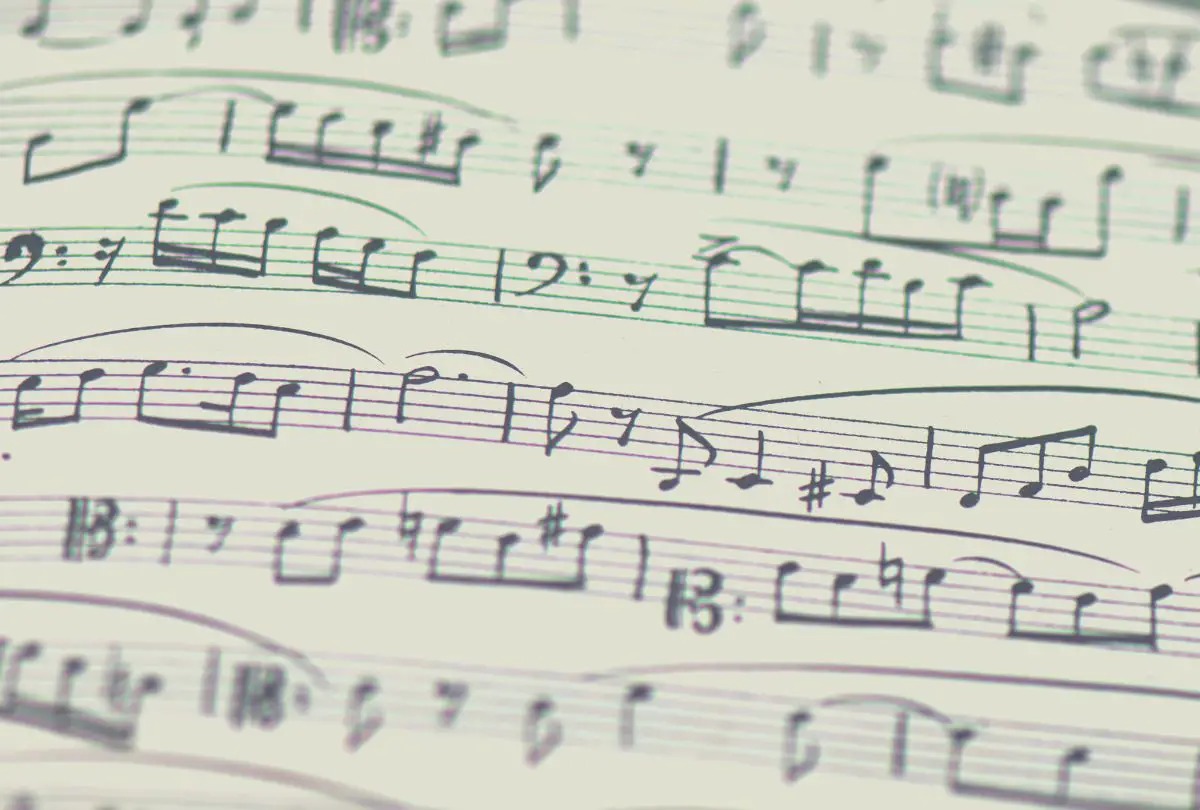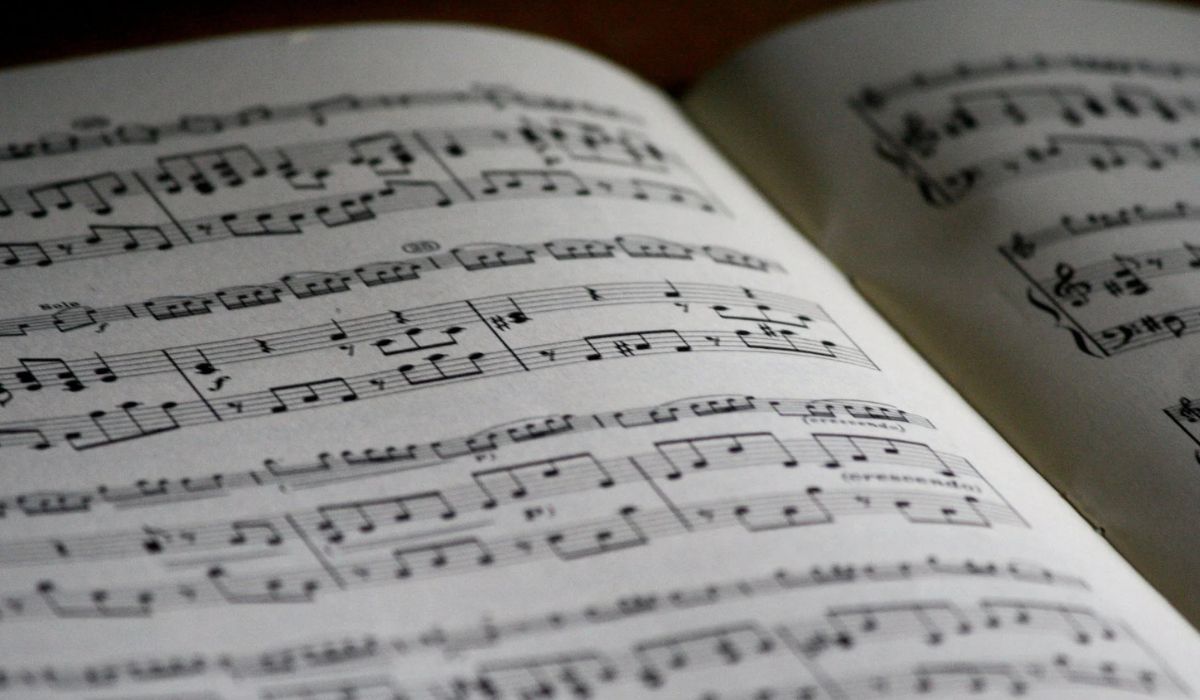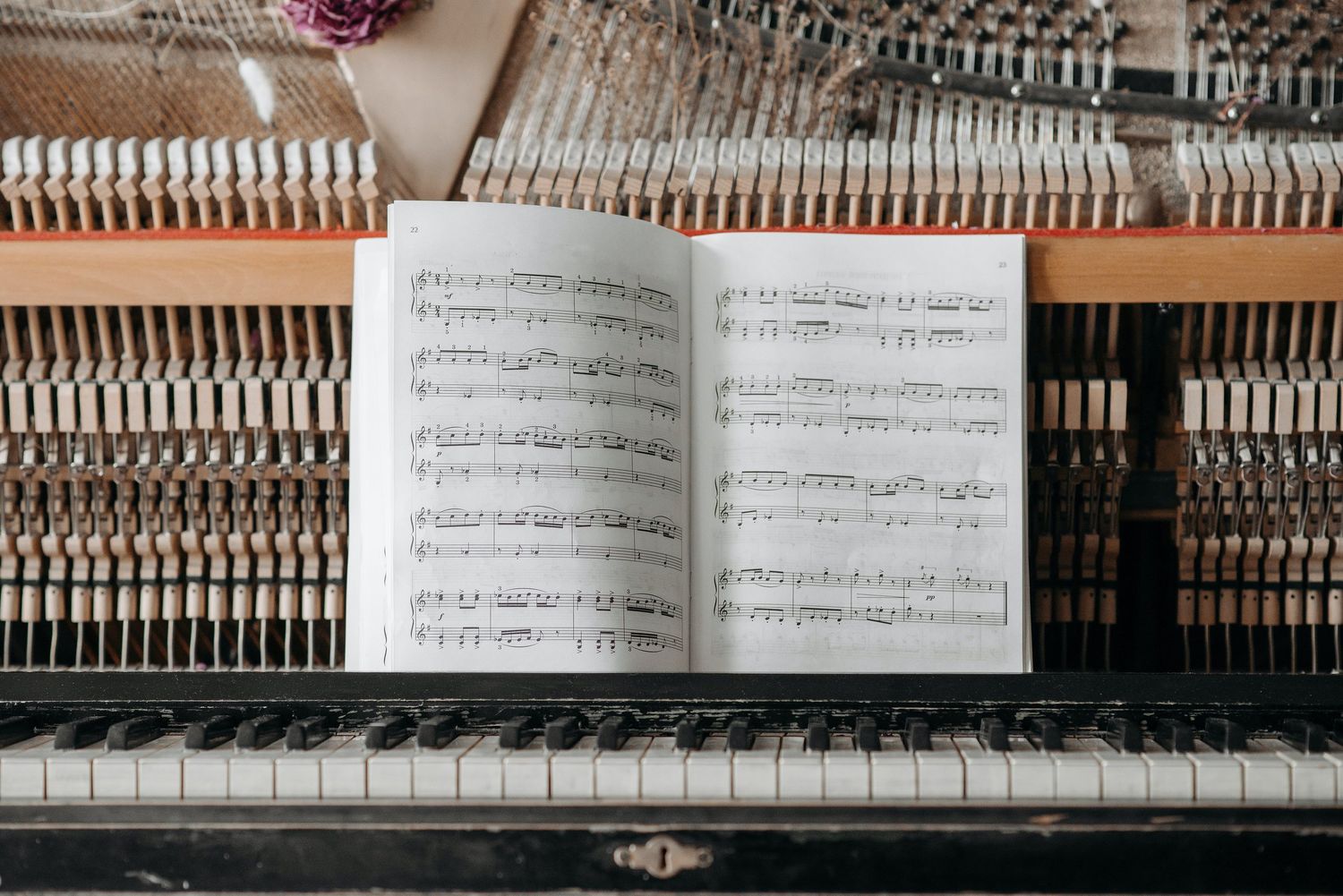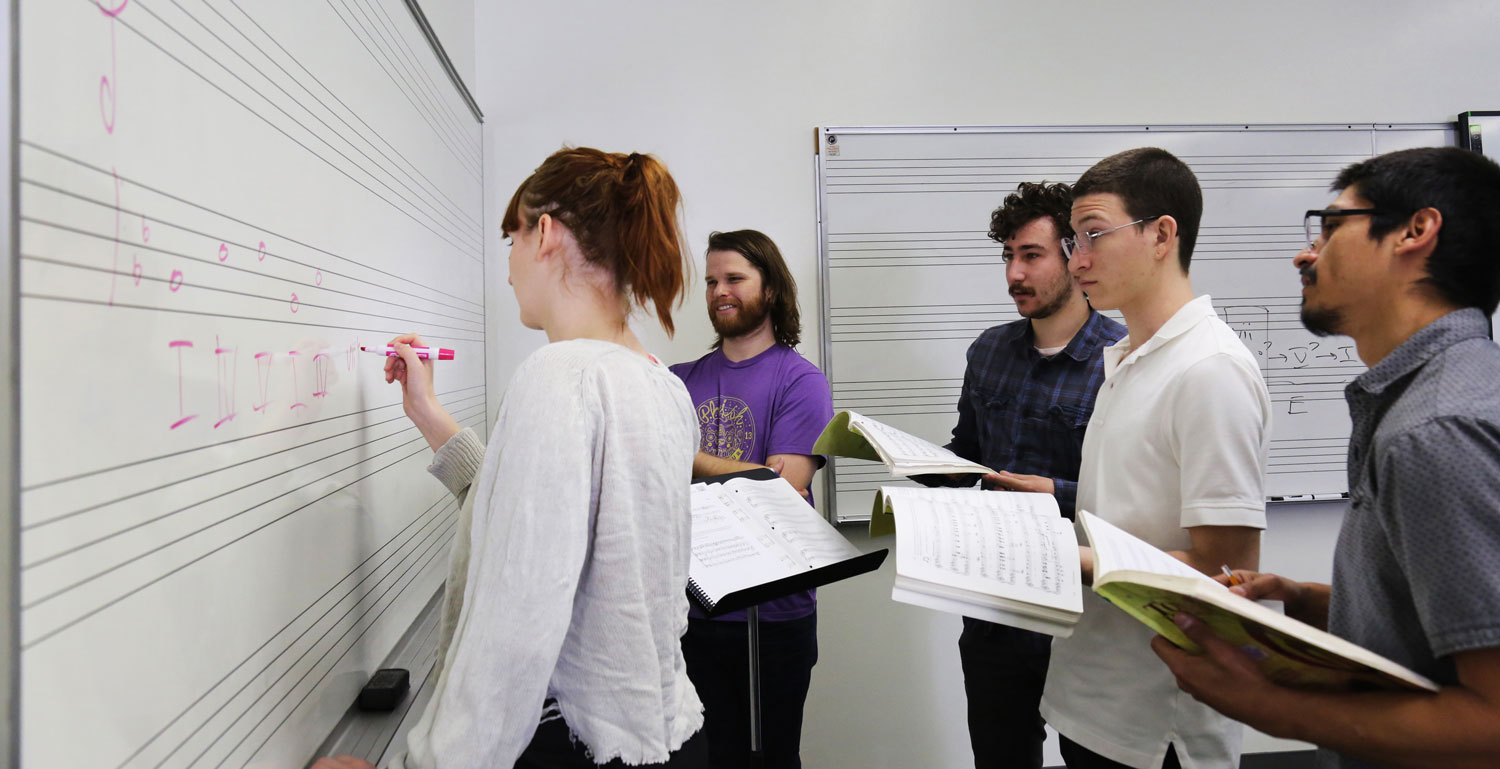Home>Production & Technology>Music Theory>Where Did Beatles Learn Music Theory
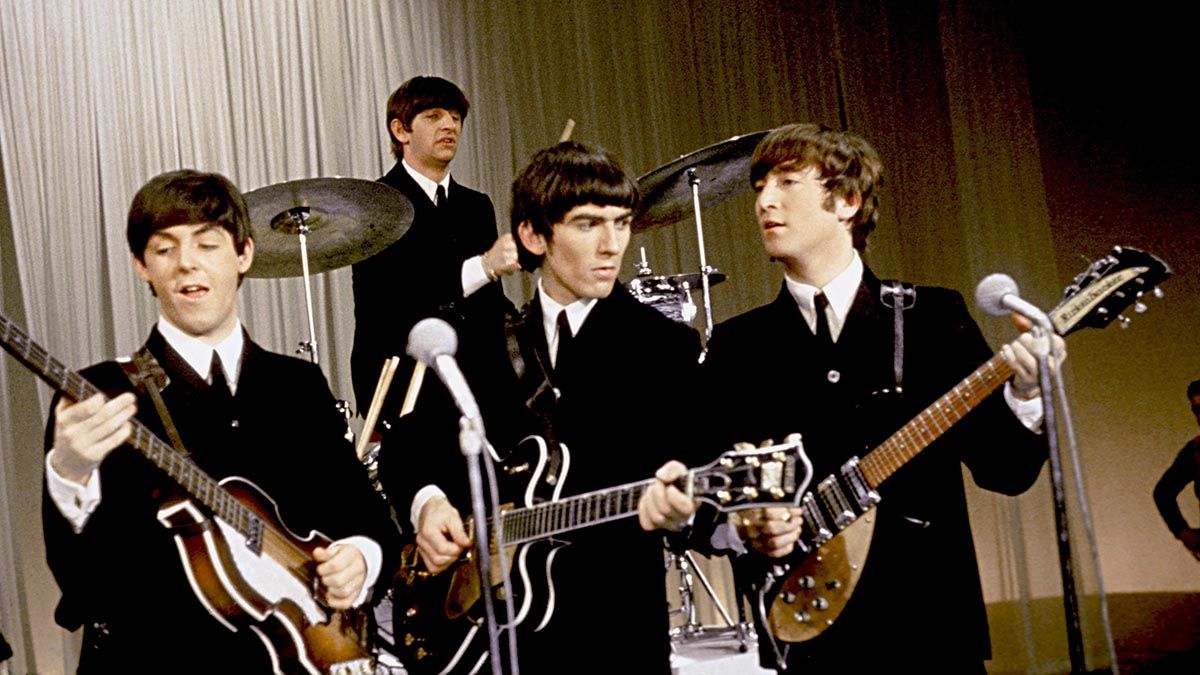

Music Theory
Where Did Beatles Learn Music Theory
Modified: February 14, 2024
Learn about where the Beatles learned music theory and how it influenced their iconic sound. Discover the impact of music theory on their groundbreaking compositions.
(Many of the links in this article redirect to a specific reviewed product. Your purchase of these products through affiliate links helps to generate commission for AudioLover.com, at no extra cost. Learn more)
Table of Contents
- Introduction
- Early Musical Training of The Beatles
- Influence of Liverpool’s Music Scene on The Beatles’ Musical Education
- The Quarrymen and The Birth of The Beatles
- The Role of Hamburg in Shaping The Beatles’ Musical Knowledge
- The Music Theory Behind The Beatles’ Songwriting
- The Beatles’ Experimentation with Different Musical Styles
- Conclusion
Introduction
The Beatles, arguably one of the greatest rock bands in history, are renowned for their innovative songwriting, iconic melodies, and timeless music. Behind their phenomenal success, however, lies a deep understanding of music theory that helped shape their distinctive sound.
While the Beatles are often celebrated for their natural talent and creativity, they also had a solid foundation in music theory, which provided them with the tools to craft their revolutionary compositions. From their early beginnings in Liverpool to their influential residency in Hamburg, Germany, the Beatles’ musical education played a vital role in their development as musicians.
This article will delve into the intriguing journey of the Beatles’ music theory education, exploring how their early training, exposure to Liverpool’s vibrant music scene, and formative experiences in Hamburg shaped their musical knowledge. We will also examine the role of music theory in their songwriting process and their subsequent experimentation with different musical styles.
Join us as we uncover the fascinating world of music theory that influenced the legendary Beatles, providing the necessary framework for their incredible musical achievements.
Early Musical Training of The Beatles
The Beatles’ journey in music theory began long before they became the global sensation we know today. All four members of the band, John Lennon, Paul McCartney, George Harrison, and Ringo Starr, had exposure to music from a young age.
John Lennon, the band’s founder, started his musical journey by learning to play the harmonica and later picked up the guitar. Paul McCartney, a talented multi-instrumentalist, learned to play the piano at a young age and soon became proficient in guitar, bass, and drums. George Harrison, the lead guitarist of the band, also had an early interest in music, learning to play the guitar and sitar.
The Beatles’ early musical training largely consisted of learning basic musical concepts, such as scales, chords, and rhythms. They became well-versed in fundamental music theory through self-teaching, music lessons, and jam sessions with fellow musicians in Liverpool.
It was during this time that John and Paul formed a songwriting partnership, honing their skills together and exploring the possibilities of harmony and melody. This early collaboration allowed them to experiment with different chord progressions, song structures, and harmonies.
Additionally, the Beatles’ exposure to the music of various artists and genres heavily influenced their musical education. They drew inspiration from artists like Buddy Holly, Elvis Presley, and Chuck Berry, blending elements of rock and roll, pop, and R&B in their own compositions.
Their early musical training provided the foundation upon which the Beatles would build their distinctive sound. It allowed them to understand the principles of melody, harmony, and rhythm, laying the groundwork for their future experimentation and innovation.
Influence of Liverpool’s Music Scene on The Beatles’ Musical Education
The vibrant music scene in Liverpool during the 1950s and 1960s played a pivotal role in shaping the Beatles’ musical education. The city’s thriving live music venues and the presence of talented musicians provided the band with numerous opportunities to learn and grow as musicians.
Liverpool was home to various clubs and venues, including The Cavern Club, where the Beatles performed over 290 times. The band’s regular gigs at The Cavern exposed them to a wide range of musical styles and genres, allowing them to witness firsthand the talent and creativity of other performers.
Through their performances in Liverpool’s music scene, the Beatles were able to observe and learn from experienced musicians, gaining insights into stage presence, audience interaction, and the art of performing. They also had the chance to experiment with different musical techniques and styles, fusing elements of rock, pop, skiffle, and R&B into their sound.
The Beatles’ exposure to Liverpool’s music scene enabled them to develop a keen understanding of the importance of melody and catchy hooks in creating memorable songs. They studied the songs of other artists, dissecting their composition and arrangement to understand the key ingredients that made them successful.
Furthermore, Liverpool provided the Beatles with a supportive and collaborative environment. The band frequently jammed with local musicians, exchanging musical ideas and techniques. This collaborative spirit encouraged their musical growth and allowed them to immerse themselves in a rich and diverse musical community.
Overall, the influence of Liverpool’s music scene on the Beatles’ musical education cannot be overstated. It provided them with a platform to refine their skills as performers, learn from experienced musicians, and immerse themselves in a creative and supportive environment that fostered their artistic development.
The Quarrymen and The Birth of The Beatles
The Beatles’ journey officially began with their formation as The Quarrymen in 1956, a skiffle group led by John Lennon. The band started as a small skiffle group playing gigs in and around Liverpool, performing covers of popular songs and developing their stage presence.
During their time as The Quarrymen, the band members began to develop their musical skills and expand their repertoire. Paul McCartney joined the group in 1957, bringing his considerable talent and songwriting abilities to the fold. Shortly after, George Harrison joined as the lead guitarist, solidifying the core lineup of the band.
As The Quarrymen gained popularity in Liverpool’s music scene, their musical education continued to evolve. They started incorporating rock and roll and R&B influences into their performances, drawing inspiration from artists like Little Richard and Chuck Berry.
The turning point for the band came in 1960 when they were invited to perform in Hamburg, Germany. This residency in Hamburg, playing extended sets and honing their craft, allowed the Beatles to refine their musical skills and build a tight-knit bond as a band.
During their time in Hamburg, the Beatles played in clubs for long periods, sometimes up to eight hours a night. This intense experience not only improved their performance abilities but also exposed them to a diverse range of musical styles, from rock and roll to blues and jazz.
It was during their Hamburg residency that the Beatles underwent significant musical growth, experimenting with different arrangements, harmonies, and improvisation. They also developed a tighter and more cohesive sound as a band, setting the stage for their future success.
By the time they returned to Liverpool, the Beatles had transformed into a professional and polished act. They had honed their musicianship, developed a unique sound, and gained a loyal following.
The Quarrymen eventually evolved into the Beatles as we know them today, with John, Paul, George, and Ringo coming together and embarking on a remarkable musical journey that would reshape the landscape of popular music.
The Role of Hamburg in Shaping The Beatles’ Musical Knowledge
Hamburg, Germany, played a crucial role in the Beatles’ musical education and the development of their distinctive sound. The band’s residency in Hamburg from 1960 to 1962 provided them with invaluable experiences that expanded their musical horizons and shaped their future as musicians.
During their time in Hamburg, the Beatles performed in various clubs, most notably the Indra Club, the Kaiserkeller, and the iconic Star-Club. These venues provided the band with the opportunity to play extended sets, often lasting several hours. The relentless schedule forced them to refine their playing skills and stage presence, transforming them into a tight and energetic live act.
One of the most significant influences of the Hamburg experience was the exposure to a wide range of musical styles. The Beatles found themselves playing alongside and observing musicians from different backgrounds, including rock and roll, blues, jazz, and skiffle. This exposure allowed them to absorb different musical techniques, expand their musical vocabulary, and incorporate new elements into their own songwriting.
The Beatles also had the opportunity to connect with other international artists who were also performing in Hamburg. They had interactions with influential musicians such as Tony Sheridan and Astrid Kirchherr, who played a vital role in shaping their image and artistic direction.
Furthermore, the Beatles’ time in Hamburg fostered their collaborative songwriting process. The band would experiment with new ideas during lengthy jam sessions, creating and refining their original material. This collaborative and creative environment spurred their growth as composers and allowed them to push the boundaries of conventional song structures.
Perhaps one of the most notable influences of the Hamburg period was the development of their distinctive harmonies. The band would often work on intricate vocal arrangements, experimenting with different harmonies and blending their voices in unique ways. These harmonies would become a signature element of their sound and a defining characteristic of their music.
Overall, the Beatles’ time in Hamburg played a pivotal role in their musical education. The city provided them with invaluable performance experience, exposure to diverse musical styles, and opportunities for growth and experimentation. The knowledge and skills they acquired during this period were instrumental in shaping their unique sound and laid the foundation for their future success.
The Music Theory Behind The Beatles’ Songwriting
Behind the Beatles’ incredible songwriting prowess lies a deep understanding of music theory that allowed them to craft memorable and innovative compositions. Their songs exhibit a sophisticated use of harmony, melody, and structure, showcasing their mastery of various musical elements.
One of the key aspects of the Beatles’ songwriting technique was their use of chord progressions. They often employed unconventional and unexpected chord changes, creating dynamic and intriguing harmonic sequences. Songs like “Yesterday,” with its timeless melody and simple yet captivating chord progression, epitomize their mastery of creating memorable harmonic frameworks.
Melody was another essential element in the Beatles’ songwriting. They were skilled at creating catchy and infectious melodies that resonated with audiences. The melodies often incorporated interesting twists and turns, showcasing their ability to weave together different musical ideas and motifs.
The Beatles’ use of harmonies is also noteworthy. They frequently employed intricate vocal harmonies, layering different vocal lines to create lush and rich textures. From the tight harmonies in “Nowhere Man” to the intricate vocal arrangements in “Because,” their use of harmonies added depth and complexity to their songs.
Additionally, the Beatles were adept at experimenting with song structures, breaking free from traditional verse-chorus-verse patterns. Songs like “A Day in the Life” and “Hey Jude” demonstrate their willingness to explore unconventional forms and push the boundaries of conventional songwriting.
Furthermore, the Beatles’ incorporation of various musical styles into their songwriting showcased their versatility and creativity. From the blues-inspired “I Feel Fine” to the psychedelic sounds of “Lucy in the Sky with Diamonds,” they seamlessly blended different genres, adding a unique flavor to their compositions.
It is important to note that the Beatles’ songwriting process was not solely driven by music theory. Their innate musical intuition and creativity played a significant role in their songwriting as well. However, their solid foundation in music theory undoubtedly provided them with the tools and vocabulary to communicate their ideas effectively.
Ultimately, the music theory behind the Beatles’ songwriting was a harmonious marriage of technical knowledge and artistic vision. Their ability to combine complex harmonic progressions, memorable melodies, intricate harmonies, and innovative song structures is a testament to their musical genius.
The Beatles’ Experimentation with Different Musical Styles
One of the hallmarks of the Beatles’ musical journey is their constant exploration and experimentation with different musical styles. From their early days as a skiffle group to their later forays into psychedelia and beyond, the Beatles consistently pushed the boundaries of their sound and incorporated diverse influences into their music.
During their formative years in Liverpool, the Beatles drew inspiration from the rock and roll and rhythm and blues artists that dominated the music scene at the time. They emulated the energetic guitar-driven sound of Chuck Berry and the raw, emotive vocals of Little Richard, infusing their own compositions with a youthful, rebellious spirit.
As the Beatles’ popularity grew, their music began to reflect broader influences. They incorporated elements of folk music, particularly evident in songs like “Norwegian Wood (This Bird Has Flown),” which features the characteristic sound of the sitar played by George Harrison.
The band’s music took a revolutionary turn with the release of their album “Sgt. Pepper’s Lonely Hearts Club Band,” which showcased their groundbreaking experimentation with psychedelia and studio techniques. This album, along with subsequent works such as “Magical Mystery Tour” and “The White Album,” incorporated avant-garde sounds, unconventional song structures, and innovative production methods.
The Beatles also delved into the world of Indian classical music, thanks to George Harrison’s fascination with the sitar and his close association with Ravi Shankar. This influence can be heard in songs like “Within You Without You,” which features intricate Indian instrumentation and modal scales.
Furthermore, the Beatles explored other genres such as country music, incorporating elements of country-folk in songs like “I’ve Just Seen a Face” and “Rocky Raccoon.” They also experimented with orchestral arrangements, as showcased in the iconic song “Eleanor Rigby,” which features a rich, string-driven sound.
The band’s willingness to push musical boundaries and venture into uncharted territories set them apart from their contemporaries. They transcended the confines of the traditional rock band, incorporating diverse influences and demonstrating their versatility as musicians.
The Beatles’ experimentation with different musical styles not only expanded their artistic range but also left an indelible mark on the music industry. Their willingness to blend genres and push the limits of what was considered acceptable at the time influenced countless artists to follow in their bold footsteps.
The Beatles’ constant exploration and blending of musical styles continue to inspire and captivate listeners to this day, ensuring that their music remains timeless and relevant.
Conclusion
The Beatles’ remarkable musical achievements can be attributed not only to their innate talent and creativity but also to their deep understanding of music theory. From their early musical training to their experiences in Liverpool’s vibrant music scene and their transformative time in Hamburg, the Beatles’ musical education played a crucial role in shaping their sound.
Their exploration of music theory allowed them to craft memorable melodies, intricate harmonies, and innovative song structures. The band’s mastery of chord progressions, harmonies, and melodies added depth and complexity to their compositions, setting them apart from their contemporaries.
Furthermore, the Beatles’ willingness to experiment with different musical styles and to incorporate diverse influences into their music showcased their versatility and artistic growth. From rock and roll to folk, from Indian classical music to orchestral arrangements, they continuously pushed the boundaries of their sound, paving the way for groundbreaking musical experimentation.
The Beatles’ musical journey is a testament to the power of music theory in enhancing creativity and artistic expression. Their deep understanding of musical concepts provided them with the tools and vocabulary to communicate their ideas effectively, empowering them to create timeless and influential music.
As we reflect upon the Beatles’ impact on popular music, it becomes evident that their knowledge of music theory, combined with their natural talent and innovation, revolutionized the musical landscape. Their songs continue to captivate and inspire audiences of all generations, serving as a testament to the enduring power of music theory in songwriting.
The Beatles’ journey serves as a reminder that a solid foundation in music theory can unlock limitless possibilities for musicians. It is a reminder that technical knowledge, coupled with artistic vision, can propel musicians to create music that resonates with millions and stands the test of time.
In the end, the Beatles’ music and their understanding of music theory will continue to influence generations of musicians to come, ensuring their legacy as pioneers and creative forces that forever shaped the world of music.

